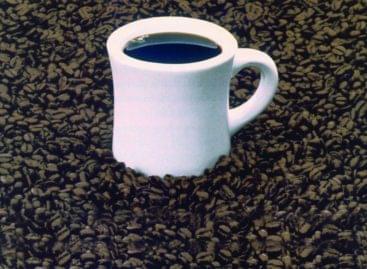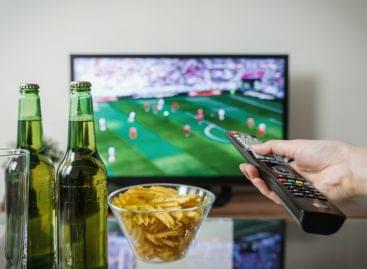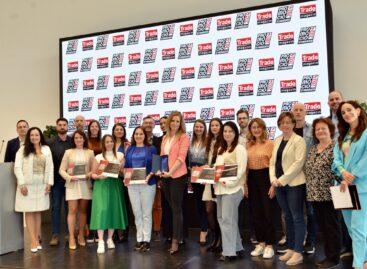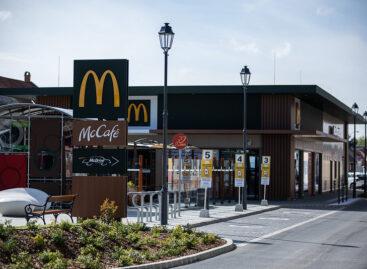Magazine: A retail overview of 2017
Hungarian retail trends are influenced by both global and local processes: consumer needs and the opportunities created by technological development interact to define the direction of changes. In 2017 the Hungarian retail sector was characterised by growth. The consumer confidence index surged: while in 2016 the Hungarian index was at 60 points, by the second half of 2017 it was up at 76 points (the European average was 87 points). Retail sales increased by 5.9 percent and in the fourth quarter the nominal sales growth was 8.2 percent in the FMCG market.

Kateryna Edelshtein
managing director
Nielsen Hungary
Nielsen data from 2017 reveal that the popularity of online shopping increased, as the proportion of online shoppers jumped from 16 to 26 percent in the 18-59 age group. At the moment about one third of Hungary’s population buy products this way or are open to doing so. 44 percent of the survey’s participants said buying online was comfortable, and they also spoke about the importance of good prices, speed and large product selection. However, the proportion of those who don’t want to buy online is still relatively high, because 48 percent of respondents said they would like to try the product before making a purchase.
The FMCG market share of hypermarkets decreased a little, while that of discount supermarkets and drugstore increased. If we examine the food market only, the expansion of discount stores was bigger: back in 2016 hypermarkets constituted the main retail channel, but by 2017 discount supermarkets and hypermarkets both had a 25-percent market share. Last year 18 new discount supermarkets opened in Hungary. Another important trend in the Hungarian market was buying food in drugstores. Compared with 2016, food sales were up 13 percent in drugstores – this generated more than HUF 2 billion higher profit for the channel. Typically shoppers buy those foods in drugstores which are considered to be healthy.
Petrol stations are also an up-and-coming channel. In the months of the Sunday trading ban petrol stations discovered the potential that lies in offering a larger selection of products. In 2015 FMCG products’ share was only a bit more than 1 percent at petrol stations, by 2017 this proportion went above 5 percent. In these two years 39 new categories appeared in this channel. In comparison with 2016, the sales growth was 13 percent at petrol stations in 2017. The majority of this was driven by classic petrol station products such as energy drinks and chocolate bars, but daily purchased groceries also contributed to the good performance, with their share in sales rising.
As for the top categories in 2017, in the food segment processed meat was at the top of the list (value sales were up but volume sales stayed put), followed by cheese which grew more than beer sales in 2017. From alcohol-free drinks it was still carbonated soft drinks that dominated, while classic fruit juices made it to the top 5 last year.In the drug segment the top 3 were laundry detergent, toilet paper and diaper. Facial tissue entered the top 5, finishing ahead of washing-up liquids.
The popularity of private label (PL) products continued to grow, especially among groceries. In 2017 nearly 29 percent of the more than HUF 1,700-billion sales were realised by PL products. In the market of drug products manufacturer brands remained stronger: a bit less than 20 percent was the share of PL products from the HUF 400-billion annual sales. Less than half of the very price-sensitive Hungarian consumers opine that PL products are cheaper than manufacturer brands and 41 from 100 respondents said PL products have a good-price value ratio. //
Related news
Spain’s Deoleo Sees Olive Oil Prices Staying High Until June 2024
Olive oil prices in Spain will remain at record levels…
Read more >The value of the Hungarian coffee market increased by twenty percent in 2022, but the volume decreased
Due to the significant increase in the price of raw…
Read more >Nielsen: We bought half as much beer at the world championship as we did during the two weeks of the European Championship
Two-thirds of Hungarians watch the World Cup in Qatar in…
Read more >Related news
The “Promotion of the Year 2024” awards were presented
This year, the “Promotion of the Year 2024” competition was…
Read more >Waves in the company trend – the changing faces of liquidations and company formations
Even with decreasing terminations, decreasing numbers of companies in the…
Read more >The first McDonald’s restaurant in Esztergom has opened
The first McDonald’s restaurant in the city of Esztergom opened…
Read more >







